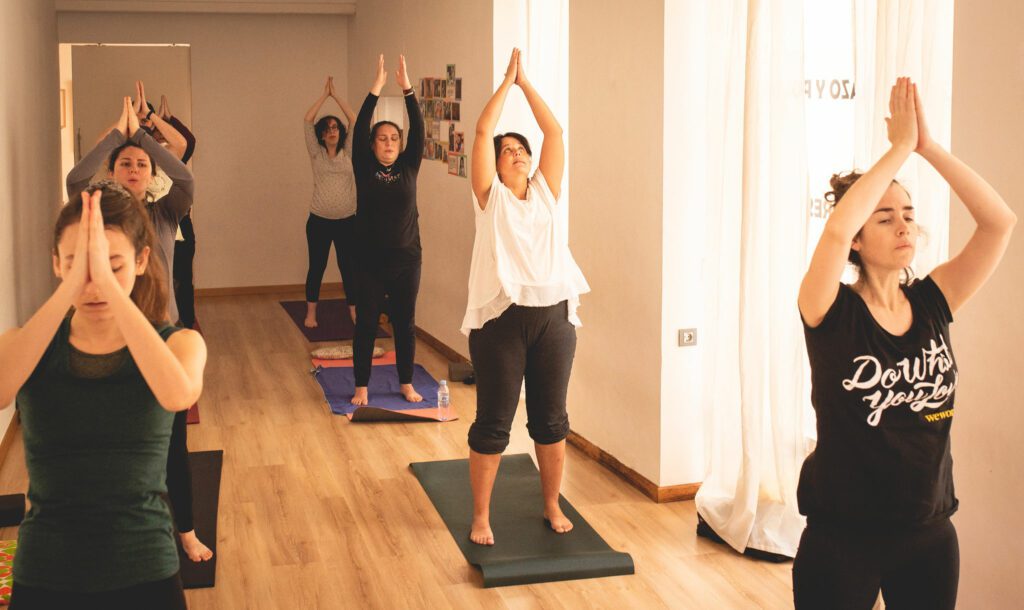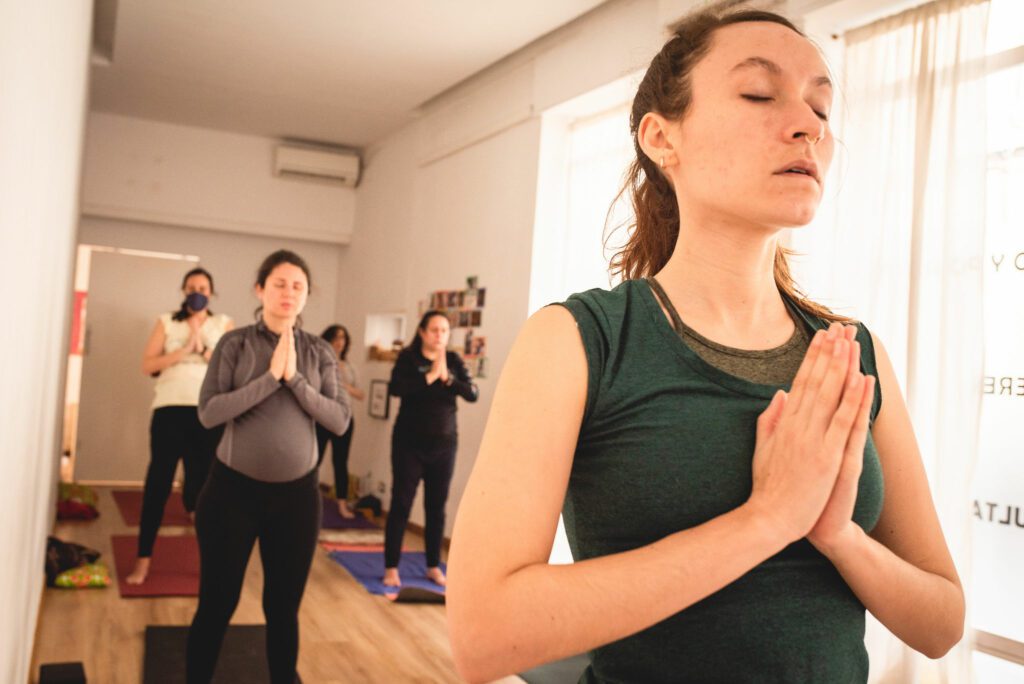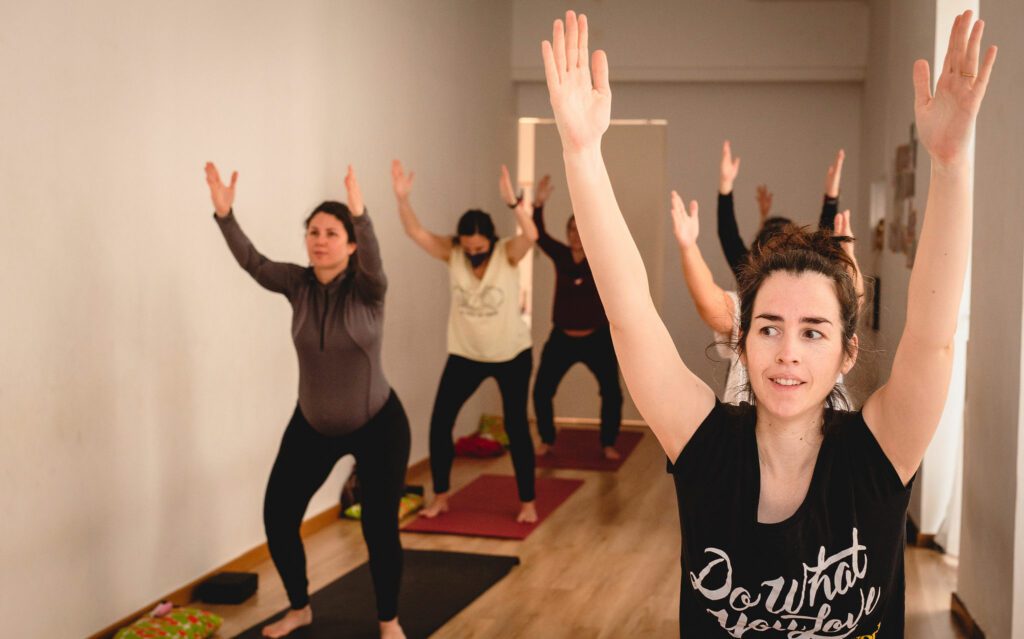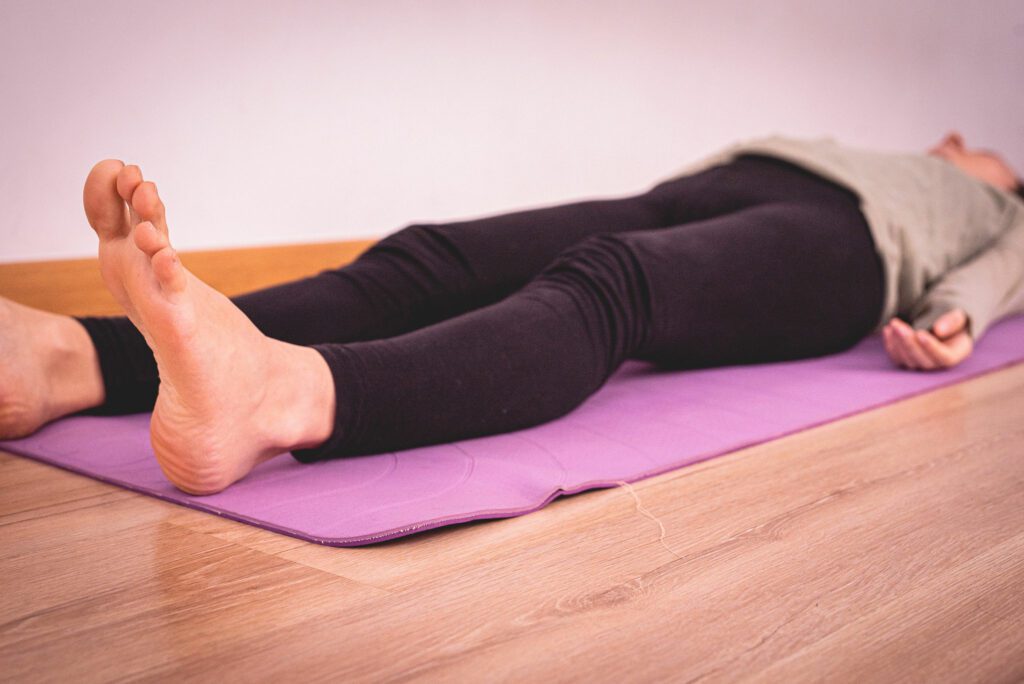The practice of yoga during pregnancy and postpartum It is highly beneficial for both you and the baby., with some indications and a good accompaniment You will be able to carry out your practice safely and adapted to each trimester. Today in mamayoga We tell you what asanas you should avoid during pregnancy.
your new status
First and foremost remember that you are pregnant not sick. You are in a different state than usual but that does not mean that you cannot do anything. Physical activity, body movement, breathing, recognizing your abilities and your instinct They will be your allies during pregnancy and childbirth.
Despite this, there will be certain positions that it is better to avoid or rather reinvent during pregnancy.

abdominal strength
As the baby grows your body adapts by stretching the muscles of the abdominal wall. It is a natural process that is accompanied by a cocktail of hormones, including elastin, which can weaken the unions of said muscles, causing the rectus abdominis sometimes to separate from the midline (abdominal diastasis).
You must give your abdominal area time to loosen up as your pregnancy progresses, don't force her. Although your abdominal girdle will continue to work when you walk, move, go about your usual life and in certain postures in an indirect way, this is not the time to work abs.
The 66% of pregnant women have diastasis recti in the third trimester. Others in the postpartum period after prolonged deliveries (both physiological deliveries and cesarean sections) and some from the first trimester due to very intense abdominal work before becoming pregnant. If this is your case, we recommend a good pelvic floor examination both before and after childbirth.
In class avoid direct abdominal work postures and intense how:
- boat pose (Navasana) and its variants in torsion.
- Postures or transitions where being on your back you raise your head or the whole trunk with force in your navel (meru dandasana).
Be careful of the impact during pregnancy
Although the yoga It is not an impact sport, you must save some gestures in order to return your safer and more conscious practice. We speak for example of:
- The jumps in transitions from one posture to the other.
- Those heel strikes to bring the leg forward releasing all your weight on the ground.
groin pressure
You will discover during your pregnancy that your pelvis and hips have a thousand and one faces that you did not know until now. All movements and all postures are welcome, but to save you dizziness and poor circulation in your legs we leave you some asanas to avoid:
- Torsions where one or both groin closes in intense flexion (jathara paravritti with legs stretched out).
- Twists or turns where you press one leg towards the baby or the baby (ardha matsyendrasana turning towards the bent leg).
Even so gentle spinal twists are beneficial, so look for postures that make this turn without closing the groin or pressing your abdomen.

Force vs Tension
Beware of spoilers, babies are born with an average of 3.5Kg and they will want to be sooooooo much in your arms. So recognize and reconnect with your strength is necessary. Of course, force is not the same as tension.
In the first weeks of your pregnancy avoid generating great physical tensions in your body. Instead of thinking about force, focus your practices on relaxation. You will already enter the second trimester with energy to take on the world.
What you should avoid is generating unnecessary loads when you activate: shoulders, jaw, tongue, buttocks always very relaxed. The right and necessary force to maintain the posture or the movements.
inverted
Traditionally, pregnant women were prohibited from doing inverted yoga. The reasons were several, body changes, avoid bringing all the blood to the head, not load the wrists with excessive weight, possible falls, etc.
This recommendation still stands when it comes to moms who have never practiced before, also in inverted on the head or any position that makes you feel uncomfortable. But here comes the but...
You can practice safely invested adapting them to a kinder version with your body and your state. For example using the wall.
With your back to the ground, shoulders and head very relaxed, support your feet on the wall with your knees bent and perform viparita karani with strength in your legs to raise your hips and baby towards the ceiling. Even if you already practiced from there you can release one or both legs from the wall and go to the inverted position on the shoulders and head for a few breaths.
Practice without fear this version throughout your pregnancy, it will be very useful if you notice a lot of pressure on the pubis due to the placement of the baby in the third trimester.
Although I already warned you that the last weeks or days of your pregnancy you will not feel like this asana at all. The surest reason is that you begin to notice that labor is approaching and this requires verticality. Let gravity help the baby go down, turning you inside out is going to be quite an internal struggle.

During pregnancy, face down no thanks
All postures in the prone position, that is, where you lie on the baby are on our no list, it is most likely that you will not even think of it. Some examples:
- The arch on the ground (danurasana)
- The crocodile (nakrasana)
- The cobra climbing from the crocodile.
Other posture adaptations during your pregnancy
Legs hip-width apart in all standing postures. Closing legs is over, your pelvis asks for freedom.
In case of heartburn or reflux you will have to adapt certain postures ensuring that your head is always above the heart. Especially in standing push-ups (uttanasana, Adhomukha Svanasana).
If you have been diagnosed with placenta previa, do not spend more than a couple of breaths in squatting positions (malasana, uttha mandukasana, utkatasana on ground).
Beyond Postures to Avoid the important thing is that you listen to yourself, that you begin to recognize your needs. As you practice, you will recognize movements, sounds that soothe you, postures that help you rest, and others that give you strength and energy.
It's time to meet you in your new mother state.
Practice and enjoy.
Author and editor, prenatal yoga teacher





